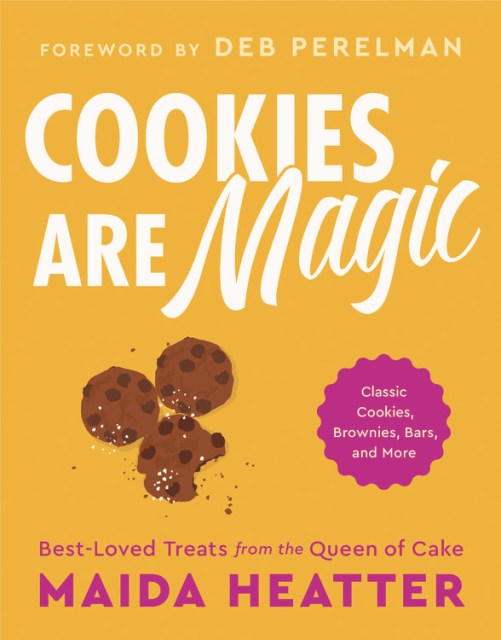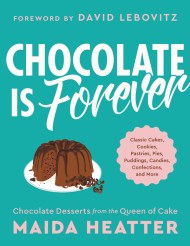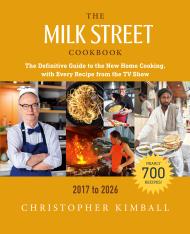Promotion
Use code BEST25 for 25% off storewide. Make sure to order by 11:59am, 12/12 for holiday delivery!
By clicking “Accept,” you agree to the use of cookies and similar technologies on your device as set forth in our Cookie Policy and our Privacy Policy. Please note that certain cookies are essential for this website to function properly and do not require user consent to be deployed.
Cookies Are Magic
Classic Cookies, Brownies, Bars, and More
Contributors
Foreword by Deb Perelman
Formats and Prices
- On Sale
- Apr 7, 2020
- Page Count
- 272 pages
- Publisher
- Voracious
- ISBN-13
- 9780316460187
Price
$28.00Price
$35.00 CADFormat
Format:
- Hardcover $28.00 $35.00 CAD
- ebook $14.99 $18.99 CAD
This item is a preorder. Your payment method will be charged immediately, and the product is expected to ship on or around April 7, 2020. This date is subject to change due to shipping delays beyond our control.
Buy from Other Retailers:
Maida Heatter is one of the most trusted and beloved cookbook authors of all time. Her recipes, each a modern classic, have inspired extraordinary bakers such as Dorie Greenspan, Christina Tosi, and Smitten Kitchen’s Deb Perelman, whose foreword introduces the joy of Maida’s cookies to a new generation.
Maida knew that cookies are the key to happiness, and she always kept them nearby: a fudgy, minty Palm Beach Brownie in her purse, neatly wrapped in cellophane, a batch of Absolutely-the-Positively-Best Chocolate Chip Cookies in the freezer, or a box of delicate brandy snaps ready for an elegant gift.
Now, Cookies Are Magic collects nearly 100 of Maida’s very best recipes from her “legendary” (New York Times) 50-year career-her crispiest, crunchiest, and most ooey-gooey cookies, bars, and more.
Developed for foolproof baking by anyone, each recipe is written with Maida’s warm but no-nonsense instructions and carries her guarantee that it will work perfectly every time. Filled with classic sugar cookies, tart lemon bars, cookie kisses, and chocolate and peanut butter ripples, this is the only cookie book you will ever need.
Genre:
-
“Whenever someone tells me they want to start baking, I tell them to turn to Maida Heatter.”Dorie Greenspan
-
“Everything I know about baking I learned from Maida Heatter… it’s as if she’s standing beside you in the kitchen, encouraging you as you go along.”Martha Stewart Living
-
“Maida Heatter is the fairy godmother of anything sweet, spicy, crunchy, chewy, or fluffy that you could possibly imagine baking.”Wolfgang Puck
-
“The Queen of Cake… Maida’s goal is a perfect dessert every time—and she wants those who follow her recipes to achieve the same end.”Saveur
-
“Doyenne of desserts, queen of cookies, sultana of sweets… People love to bake Maida Heatter recipes… producing luscious creations that almost invariably bring grown men and women to their knees.”New York Times
-
“Her recipes (and Maida herself) are known for their precision; each step is integral, each ingredient intentional… you need to read her cookbooks, and bake from them.”Food52
-
“There are no secrets. Maida Heatter is in your kitchen corner. The conversation is easy to follow, and you pick it up whenever you crack open one of her books… Most important, Heatter has recipes for everyone.”Chicago Tribune
-
“I feel as if I am standing alongside her… I often find myself laughing out loud as I read her anecdotes about her successes and her failures … What beginners can expect from Maida’s book is an extremely high success rate.”Nancy Silverton
-
"A phenomenon."Washington Post
Newsletter Signup
By clicking ‘Sign Up,’ I acknowledge that I have read and agree to Hachette Book Group’s Privacy Policy and Terms of Use






